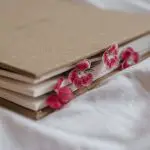When you're looking to enhance the feel and scent of your home textiles, using fabric softener can be a smart choice. Start by selecting the right product that suits your fabrics and any sensitivities you might have. You'll need to know when and how to apply it—whether in a washing machine or with dryer sheets. However, it's crucial to avoid common pitfalls that could diminish your results. Understanding these nuances can make a significant difference in your laundry routine, so let's explore the best practices to get the most out of your fabric softener.
Table of Contents
Key Takeaways
- Add liquid fabric softener during the rinse cycle for top-loaders or in the designated compartment for front-loaders for even distribution.
- Use dryer sheets as an alternative for softening benefits when drying clothes.
- Dilute fabric softener for delicate items to prevent potential staining or damage.
- Avoid using fabric softener on towels, microfiber, or moisture-wicking fabrics to maintain their absorbency and performance.
Benefits of Fabric Softener
Using fabric softener not only makes your clothes feel softer, but it also helps reduce static cling and wrinkles, enhancing your laundry experience. When you add fabric softener during the rinse cycle, it coats the fibers of your fabrics, creating a protective layer that smooths out rough edges. This results in garments that feel luxurious against your skin.
Another significant benefit is the reduction of static electricity. You know how annoying it is when your clothes stick together or cling to your body? Fabric softener helps combat this, making it easier to get dressed and stay comfortable throughout the day. Plus, it minimizes wrinkles, so you won't have to spend as much time ironing or steaming your clothes.
Additionally, fabric softeners often come with pleasant fragrances that can leave your laundry smelling fresh and inviting. This can enhance your overall laundry experience, making it more enjoyable to wear your freshly laundered items.
Lastly, using fabric softener can prolong the life of your fabrics by reducing friction during washing and drying. You'll find that your clothes not only look better but last longer, giving you more value for your money.
Choosing the Right Fabric Softener
Selecting the right fabric softener can enhance the benefits you've already experienced, ensuring your clothes stay soft, static-free, and fragrant.
First, consider your fabric types. Not all softeners are suitable for every material; for example, some are specifically designed for cotton, while others work best with synthetics. Look for labels that match your laundry needs.
Next, think about fragrances. Some softeners offer a wide range of scents, while others are unscented for sensitive skin. If you have allergies, it's wise to opt for hypoallergenic options to avoid irritation.
Also, check for added features like wrinkle reduction or stain protection. These can give your fabrics extra care, making them last longer and look better.
You should also pay attention to the concentration. More concentrated softeners typically require smaller amounts, which can be more economical over time.
Lastly, read customer reviews to gauge effectiveness and satisfaction. By choosing a fabric softener tailored to your needs, you'll ensure your textiles receive the best possible care, enhancing their longevity and comfort.
Application Methods for Textiles
To get the most out of your fabric softener, you need to apply it correctly during your laundry routine. Start by checking your washing machine's instructions for the best way to add fabric softener. Most machines have a specific compartment for it, usually marked as “fabric softener” or “softener.” Add the recommended amount as specified on the product label.
If you're using a top-loading machine, pour the softener into the dispenser during the rinse cycle. This timing ensures it evenly distributes through your fabrics. For front-loading machines, add the softener to the designated compartment before starting the wash.
If you prefer to use dryer sheets, simply toss one in with your wet laundry before you start the drying cycle. This method provides similar benefits, leaving your textiles soft and fresh.
When washing delicate items, consider diluting the liquid fabric softener with water to avoid any potential staining.
Common Mistakes to Avoid
One of the biggest mistakes people make is adding too much fabric softener, which can leave residue on clothes and reduce their absorbency. You should always measure the recommended amount, as using more doesn't mean your fabrics will feel softer.
Another common error is using fabric softener on all types of textiles. Avoid using it on towels, microfiber, or moisture-wicking fabrics, as it can impair their ability to absorb water or wick moisture away.
Additionally, mixing fabric softener with bleach or other cleaning agents can be harmful. These chemicals can react negatively, creating harmful fumes and reducing their effectiveness.
Don't forget to check the labels of your textiles. Some manufacturers recommend against using fabric softener, so it's essential to follow those guidelines.
Lastly, using fabric softener in every wash isn't necessary. You can skip it for every load, especially for items that don't require extra softness.
Keep these tips in mind to get the most out of your fabric softener while maintaining the quality of your textiles. By avoiding these mistakes, you'll ensure your home textiles stay fresh and functional.
Care Tips for Softened Fabrics
Caring for fabrics that have been softened with fabric softener involves regular maintenance to keep them feeling fresh and looking their best.
First, wash your softened fabrics in cold water to preserve their softness and color. Hot water can break down the fibers and diminish the effects of the softener.
When it comes to drying, opt for a low-heat setting or air-dry your items. High heat can cause damage and reduce the life of the fabric.
Be mindful of the detergent you use. Choose a mild, residue-free detergent that won't counteract the benefits of the fabric softener. Additionally, avoid using too much fabric softener during washing; overuse can lead to a buildup, making the fabrics stiff over time.
For items like towels or blankets, consider washing them separately to prevent lint transfer.
Regularly check for any signs of wear or fraying, and address these issues promptly to maintain the integrity of your fabrics.
Frequently Asked Questions
Can Fabric Softener Be Used on All Fabric Types?
You can't use fabric softener on all fabric types. It's great for cotton and polyester, but avoid it on microfiber, towels, and performance fabrics. Always check care labels before applying fabric softener to your laundry.
Is Fabric Softener Safe for Sensitive Skin?
Yes, fabric softener can be safe for sensitive skin, but it often contains fragrances and chemicals that may irritate. If you're concerned, choose hypoallergenic options or skip it altogether to avoid potential reactions.
How Does Fabric Softener Affect Drying Time?
Fabric softener can actually reduce drying time. It coats fibers, making them less absorbent, so they release moisture faster. You'll notice your clothes feel softer and dry more quickly when you use it regularly.
Can Fabric Softener Reduce Static Cling in Synthetic Fabrics?
Yes, fabric softener can reduce static cling in synthetic fabrics. It works by coating the fibers, helping them slide against each other more smoothly. Just add it during the rinse cycle for the best results.
What Happens if You Use Too Much Fabric Softener?
If you use too much fabric softener, your clothes can become greasy, lose absorbency, and may even attract more dirt. Over time, it can also damage your washing machine and create residue build-up.
- How Does Ring Spun Cotton Affect Garment Fit and Shape Retention? - August 13, 2024
- What Are the Challenges in Producing Ring Spun Cotton? - August 13, 2024
- Is Ring Spun Cotton Suitable for Plus-Size Clothing? - August 13, 2024






